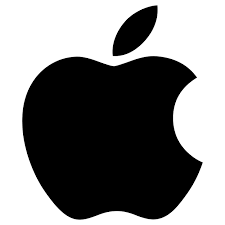
RATING

Outlook
Positive
SECTOR
Information Technology
Chief Sustainability Officer
Lisa Jackson
Contact Details:
N/A
T: N/A
E-mail: N/A
Stock Exchange and Ticker
NASDAQ: AAPL
Website
Contact
T: (408) 996–1010
E.mail: N/A
Listing
- #68 Best Employers for Veterans (2022)
- #103 World’s Top Female-Friendly Companies (2022)
- #153 Mexico’s Best Employers (2022)
- #5 World’s Best Employers (2022)
- America’s Best Employers By State (2022)
- #350 Best Employers for Women (2022)
- #29 Canada’s Best Employers For Diversity (2022)
- #98 Best Employers for New Grads (2022)
- #7 Global 2000 (2022)
- #63 America’s Best Large Employers (2022)
- #31 Canada’s Best Employers (2022)
- #9 The Halo 100 (2022)
- #182 Best Employers for Diversity (2021)
- #55 America’s Best Employers (2021)
- #3 Just Companies (2021)
Awards
- EPA Safer Choice Partner of the Year Award, second year in a row
- A+ rating received from the Mind the Store campaign
- Ranked #1 of 50 retailers on the Mind the Store Retailer Report Card
Revenue
$394.328B
Market Capitalisation
$2.25T
Employees
154,000
Content source
Apple Sustainability Report
Evaluation of Apple
The business has detailed goals with measurable progress toward them. Its four main topics are climate change, resources, smarter chemistry, and engagement. In terms of climate change policies, we discovered that Apple established the $200M Apple Restore Fund with the aim of removing over 1M metric tons of carbon per year, is carbon neutral as of April 2020, and has reduced emissions by 40% since 2015.
When we examine the resources, we observe that eight products with a minimum of 20% recycled content were released in fiscal 2021. We also see that the use of recycled tungsten and cobalt more than doubled in fiscal 2021, and that certified recycled gold was used in an Apple product for the first time. In addition, all established final assembly and sub-assembly sites for Apple Watch Series 7 send zero waste to landfill, and 75% less plastic is used in packaging across all product lines compared to 2015; the Prineville data center and 17 supplier facilities have been certified by Alliance for Water Stewardship for leading water management practices.
Regarding chemicals, we’d like to thank Apple for its informative reporting on the topic. Highlights from this year’s report after reviewing it 100% of Apple’s final assembly supplier sites have used only safer alternative cleaners and degreasers since 2018; 1000+ parts and material suppliers have been onboarded into the company’s Full Material Disclosure program; 45K+ materials are included in its comprehensive material library; and the company is a founding signatory of CEPN’s Toward Zero Exposure program, which aims to reduce the exposure of electronics workers to hazardous chemicals.
Lastly, the company has the necessary certifications, which increase the transparency of its operations. However, rather than being zero-emission, it aims to be 100% carbon-neutral by 2030. This implies that it will continue to emit a significant amount of CO2. This prompted some people to accuse Apple of greenwashing. However, it has made good strides toward lowering its carbon emissions, particularly since 2015, and is continuing to do so, especially by switching to 100% renewable electricity and recycling materials. Consequently, the overall grade is B.
Sustainability Scorecard
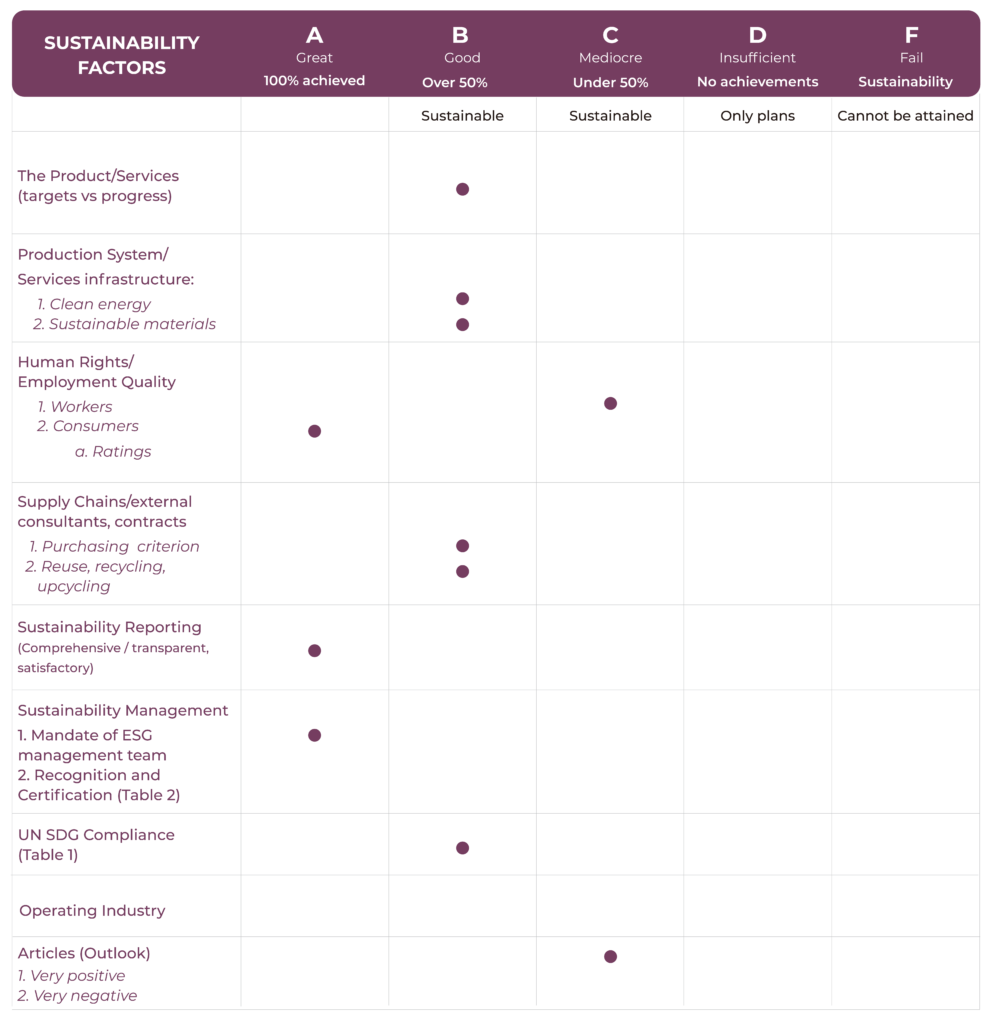
Apple Company Activity
Apple Inc. (Apple) creates, produces, and sells wearable technology, smartphones, tablets, and personal computers, with a signature design and usability that gained it millions of users worldwide over the last 25 years. Across the Americas, Europe, the Middle East, Africa, and Asia-Pacific, the company has commercial presence. The US city of Cupertino, California, serves as the home of Apple. (Source: GlobalData).
The iPhone, iPad, Mac, iPod, Apple Watch, and Apple TV are among Apple’s product lines. It provides a variety of consumer and business software programs, including iCloud, AppleCare, Apple Pay, iOS, macOS, iPadOS, and watchOS.
Through the App Store, Apple Arcade, Apple News+, Apple Fitness+, Apple Card, Apple TV+, and Apple Music, Apple sells and distributes digital content and applications. In addition, the business provides digital content from third parties as well as accessories, software, and related services.
Apple Sustainability Activity - As per company declarations
Apple is committed to demonstrating that business can and should be a force for good. Achieving that takes innovation, collaboration, and a focus on serving others. It also means leading with its values in the technology it makes, the way Apple makes it, and how we treat people and the planet we share. Apple is always working to leave the world better than we found it, and to create powerful tools that empower others to do the same.
Certificate & Labels, Standards and Frameworks
- ISO 14001
- ISO 14021
- ISO 14040/14044
- ISO 14064-3
- ISO 14046-3
- ISO 22810
- ENERGY STAR
- LEED
- BREEAM
- Alliance for Water Stewardship (AWS) certification
- UL’s Zero Waste to Landfill certification
- TRUE certification
- Renewable Energy Certificates
- Sustainability Accounting Standards Board (SASB)
- Task Force on Climate-related Disclosures (TCFD)
Apple in the news: Press Reviews and Social Media
According to Apple, its manufacturing alone accounts for 70% of its carbon emissions. According to Compare and Recycle, the production of iPhones alone will produce astonishing 17 megatons of CO2 emissions in 2022. Lithium and cobalt mining, for example, have a very real impact on the environment. One ton of lithium requires about 2.2 million liters of water to produce, and this water is frequently taken away from homes and communities that depend on it, having an immediate and significant impact on nearby communities. Mining has a growing human cost on top of its harmful effects on the environment.
These carbon credits are essential to Apple’s ability to achieve many of its environmental objectives. The production of iPhones and other devices is still far from environmentally friendly. Although Apple’s supply chains continue to produce a significant amount of CO2 and other greenhouse gases, they are theoretically offset by the amount of environmental initiatives they support. Apple can easily achieve its environmental objectives by using carbon credits and other emission-offsetting strategies. Many analysts have, however, questioned whether carbon credits frequently fell short of having the impact on emissions that they promised.
Even Apple has been accused by some of self-greenwashing. Apple is undoubtedly concerned with looking green, but most of its decisions are still influenced by profits. Although the effectiveness of carbon credits is debatable.
Numerous OEMs have been busy promoting their sustainability credentials over the past few months. Compared to the iPhone 13 Pro’s 69kg carbon footprint, the iPhone 14 Pro’s is 65kg. This decrease in carbon emissions is primarily attributable to increased recycling and a more effective supply chain. Refurbished iPhones are a great way to make sure that the significant carbon emissions associated with producing a new iPhone are distributed over more than one life of the product.
Apple will monitor and check the carbon emissions of its major manufacturing partners. Since 2020, the company has been carbon neutral, and it plans to maintain this standard throughout its entire supply chain. It may be difficult for Apple to leave the world better than they found it because global CO2 emissions have more than doubled since the company’s founding. Apple has revealed three brand-new initiatives for the Restore Fund. The business is engaged in building substantial solar and wind energy projects in Europe. Apple and the World Wildlife Fund (WWF) are collaborating in Namibia and Zimbabwe to advance climate resilience and sustainable livelihoods.
22% of its carbon footprint is attributable to the energy used over the course of its products’ lives. As a result, Apple keeps trying to make its products use less energy. The business recently revealed that it has increased the amount of clean power used in its supply chain by twofold. The business is currently working to create a closed-loop manufacturing system. This indicates that new products are produced using more environmentally friendly methods from older ones. Apple has also altered the way it packages its products, choosing renewable forests over plastic.
One of the most pressing environmental issues right now is e-waste. Products like smartphones and laptops continue to rely heavily on rare minerals like cobalt, which must be mined from the earth and are frequently extracted using dubious labor practices. All of this is a part of “closing the loop,” a strategy used in the “circular economy” to explore a resource’s full potential through systems of recycling and reuse. As per Jackson, Apple is already considering how to use this model. In artisanal mining, workers use their own equipment and resources to work independently without being formally employed by a company. This method of mining is regarded as being extremely hazardous for the environment and the workers themselves.
Apple aspires to be the industry leader not only in terms of material sourcing but also in terms of material recycling and reuse. Some of these materials are rare because they are rare and valuable. We only have one planet and one set of resources, so we must all use them as effectively and practically as we can, Jackson says. “Apple is happy to take on the leadership role here, but it’s incumbent on all of us to enable material to be reused and recycled.” Apple published a report on conflict minerals earlier this year, outlining the company’s “commitment to responsible sourcing” despite the fact that the case is still pending. When questioned directly about the use of materials from the DRC and concerns over labor practices, Jackson expresses a similar sentiment. She explains, “We’ve been investing in our supplier responsibility program, which has been recognized as a global leader in ethical labor and environmental practices and has received awards from the UN, Europe, and others.” Apple wants to go above and beyond that, becoming the industry leader not only in the sourcing of materials but also in their recycling and reuse.
- Extra Information
Apple was also negatively involved in 2020 Belarusian protests against president Alexander Lukashenko, November 2022 protests about COVID-19 in China, 2019 Hong-Kong protests, 2019 Crimea crisis and 2021 Russian legislative election.
Highlights from Apple Sustainability Report
Achievements
- By switching to recycled and low-carbon aluminum, carbon emissions associated with aluminum have decreased by 68 percent since 2015
- Apple’s facilities energy use was reduced by 15.7 million kilowatthours through efficiency efforts implemented in fiscal year 2021
- Suppliers in the Supplier Energy Efficiency program avoided more than 1,150,000 annualized metric tons of supply chain carbon emissions in fiscal year 2021
- Apple-created renewable sources account for over 90 percent of the renewable electricity the facilities use
- Apple, alongside other partners, helped the Suzhou Industrial Park become the first industrial park in the world to earn Alliance for Water Stewardship certification
- 100+ Apple supplier facilities are zero waste verified
- 2M+ metric tons of waste redirected from landfill by supplier facilities as part of Apple’s Zero Waste Program
- In 2021, Apple and UL co-developed the firstever supply chain zero waste management system assurance program, which allows for third-party zero waste verification at a systems level rather than site level. The new assurance procedure significantly accelerates the verification process and establishes a new model that companies across industries can employ to verify zero waste programs at scale
- 92 Apple buildings worldwide are LEED or BREEAM certified for environmental performance
- Apple has generated or sourced 100 percent renewable electricity for its corporate operations since 2018
Weaknesses and Setbacks
- Insufficient or absent efforts to promote health, quality education, gender equality, and the reduction of inequalities
- Apple was a part of countless controversies
Targets vs Progress Reported
| Target | Results reported |
|---|---|
| Climate Change | |
| Achieve carbon neutrality for their entire carbon footprint by 2030, and reach their science based emissions reduction target | - 10,466 reduction in metric tons of CO2 in Scope 1 in FY 2021 compared to FY2020 - No Scope 2 emission in FY21 - By switching to recycled and low-carbon aluminum, their carbon emissions associated with aluminum have decreased by 68 percent since 2015 |
| Create products with net zero carbon impact by 2030 | - Net emissions remained stable compared to FY20 |
| Transition their entire product supply chain to 100% renewable electricity by 2030 | - 274 million kWh increase in renewable electricty |
| Resources | |
| Use only recycled and renewable materials in their products and packaging, and enhance material recovery | - Increase in use of recycled or renewable content to 18 percent of all the material shipped in products in fiscal year 2021 |
| Eliminate plastics in their packaging by 2025 | - 75% less plastic in packaging compared with 2015 - No outer plastic wrap was used in iPhone 13 packaging |
| Reduce water impacts in the manufacturing of the products, use of the services, and operation of the facilities | - The Prineville data center and 17 supplier facilities have been certified by Alliance for Water Stewardship for leading water management practices |
| Eliminate waste sent to landfill from their corporate facilities and their suppliers | - 240 metric tonnes decrease in hazardous waste - All established final assembly and sub-assembly sites for Apple Watch Series 7 send zero waste to landfill |
| Smarter Chemistry | |
| Drive comprehensive reporting of chemicals used in their supply chain to make their products | - 1000+ manufacturing partner facilities shared how chemicals are used and safely managed - 1000+ parts and material suppliers have been onboarded into Apple’s Full Material Disclosure program - 45K+ materials included in our comprehensive material library |
| Integrate smarter chemistry innovation into the way we design and build their products | - 100% of their final assembly supplier sites have used only safer alternative cleaners and degreasers since 2018 - 1000 new materials evaluated for biocompatibility in fiscal year 2021 - Founding signatory of CEPN’s Toward Zero Exposure program to help eliminate electronics workers’ exposure to hazardous chemicals |
| Avoid exposure to chemicals that could be harmful to human health or the environment | - Safer Choice Partner of the Year award from the EPA for the second consecutive year - A+ rating received from the Mind the Store campaign - Ranked #1 of 50 retailers on the Mind the Store Retailer Report Card |
UN SDGs Compliance Analysis
Progress made toward SDG targets
As reported by Apple

- Investment in a “micro-forestry” company that partners with and empowers tens of thousands of marginalized farmers to earn a living from sustainable tree farming
- Apple has prioritized 14 materials, evaluating their environmental, social, and supply impacts outlined in their Material Impact Profiles — including biodiversity factors
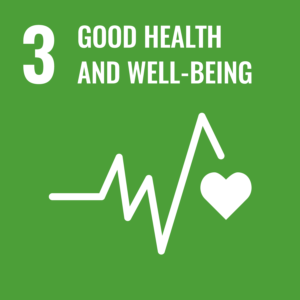
- Apple signed on as a founding member of the Clean Electronics Production Network’s (CEPN) Toward Zero Exposure program — an initiative that seeks to eliminate workers’ exposure to hazardous chemical
- Apple will support the development of a solar power system to serve a primary healthcare center in the state of Ondo, as well as 200 households in the surrounding region in Nigeria
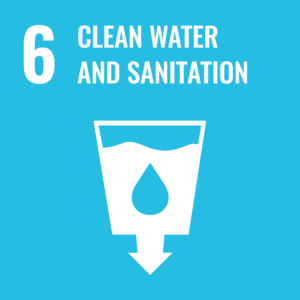
- They use tools like the World Resources Institute (WRI) Water Risk Atlas to provide geographically specific water use and water-related risks that inform our local strategy
- At the data centers in Maiden, North Carolina, and Reno, Nevada, Apple piloted an innovative approach to water treatment. Using a plant-based treatment method for process cooling water, it is able to increase water efficiency, while avoiding chemical usage and reducing discharge
- Apple captures rainwater and recover condensation as another alternative water source for use onsite
- Several suppliers have begun to collect steam that condenses from boilers — a central piece of equipment at these supplier sites. Steam collection not only provides a new water source, but also reduces the frequency that boilers need to be cleaned of impurities
- Up to 54 percent of the water they use at the corporate locations is discharged back into the local water system rather than consumed
- They require their suppliers to maintain the high standards for water discharge outlined in the Apple Supplier Code of Conduct. Through Apple’s Clean Water Program, they help suppliers to minimize process water impacts and adopt best practices in wastewater treatment
- In Prineville, Oregon, Apple partnered with the city to bring an aquifer storage and recovery system online in May 2021. In fiscal year 2021, this system stored nearly 100 million gallons of water during winter months, reducing pressure on the local watershed during drier summer months
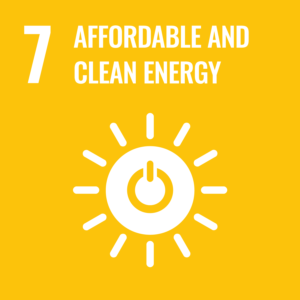
- Apple has generated or sourced 100 percent renewable electricity for its corporate operations since 2018
- Apple build its own projects, including solar, biogas fuel cells, and low-impact hydro projects, where feasible, to provide renewable electricity
- Power for ImpactTM, the program they launched in 2019, continues to provide local communities with needed energy resources
- In fiscal year 2021, the 10.3 gigawatts of renewable energy already online in Apple’s supply chain generated 18.1 million megawatt-hours of clean energy, avoiding 13.9 million metric tons of carbon emissions — a 62 percent increase over fiscal year 2020
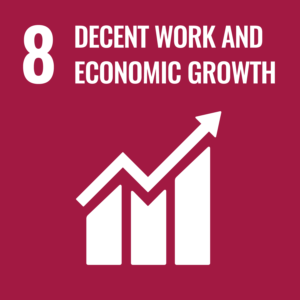
- Apple is supporting 10 new renewable projects around the world through its Power for Impact program which brings access to electricity, as well as employment since 2019
- At several locations in Santa Clara Valley, California, Apple piloted an effort to separate waste onsite, which allowed them to unlock opportunities to generate revenue from recyclers seeking specific types of waste, like copper cable
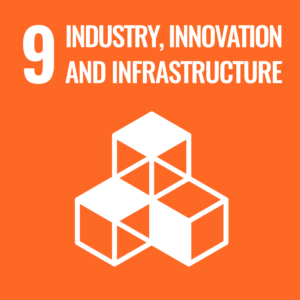
- In fiscal year 2021, a Denmark-based wind energy project that Apple had supported became operational. It features two 200-meter-tall turbines, the world’s largest, that are expected to produce 62 gigawatt-hours each year — enough to power almost 20,000 homes. The power produced onsite will support Apple’s data center in Viborg, with all surplus energy going into the Danish grid. The project will also act as a test site for powerful offshore wind turbines
- Apple invested in utility-scale storage in California and in research on new energy storage technologies. The California storage project — an industry-leading grid-scale energy storage project capable of storing 240 megawatt-hours of electricity — came online in the fiscal year 2021. This project supports its 130-megawatt California Flats solar farm that provides all of its renewable energy in California, by storing excess energy generated during the day and deploying it when it is most needed
- They’re continuing to support biological methanation research at Aarhus University, Denmark, which explores the production of synthetic methane for storage in the existing gas grid. In this process, bacteria consume both hydrogen produced from excess renewable energy and captured carbon dioxide to produce methane, the principal component of natural gas. Methane produced from renewables is a versatile energy carrier that can be used as a fuel source in households, industry, and transportation
- In 2021, Apple announced Self Service Repair, a new program that offers Apple genuine parts and tools, as well as repair manuals, to customers
- While they offer and participate in e-waste recycling programs around the world, they continue to explore ways to make recycling even more convenient for customers. That’s why, through their membership with CEF, they’re collaborating with Google, Amazon, Dell Technologies, and Microsoft to pilot a doorstep recycling program. This pilot allows customers in the city of Denver to order e-waste recycling pick-up directly from their homes starting in February 2022
- For iPhone, iPad, Mac products released in fiscal year 2021, Apple collected information on more than 92 percent of each product by mass. It’s using machine learning to digitize data from chemical tests so this information can be more easily assessed
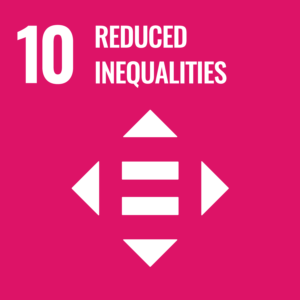
- Last year, Apple welcomed the first class to the Impact Accelerator, a training and mentorship program for Black-, Hispanic/Latinx-, and Indigenous-owned businesses headquartered in the United States that share focus on innovation and commitment to the environment
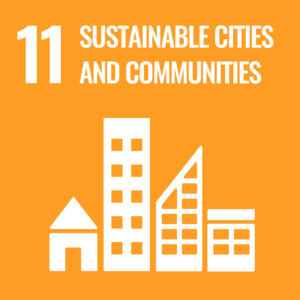
- They continue to develop our system of energy tracking and benchmarking, which includes data from utility meters that continuously monitor 15-minute electricity and daily natural gas energy consumption. This method helps to identify performance issues at their sites early. They can then take corrective action to restore building system efficiencies and actively manage the energy footprint
- They align their design and construction criteria to industry-recognized best practices for green buildings, promoting water conservation, energy efficiency, and responsible material sourcing
- In Istanbul, Apple opened Apple Bağdat Caddesi which marked significant environmental milestones in construction and design. During the store build-out, the project redirected 75 percent of construction and demolition materials from landfill. The location’s glass facade and skylight contribute to an energy savings of 22 percent, serving dual purposes of utilizing daylight to illuminate the space while connecting the site to the exterior environment. An on-site rainwater collection system, which treats and recycles water for toilet flushing and landscaping, will reduce water consumption by 45 percent off of the baseline
- Restorations like the Apple Tower Theatre in Los Angeles not only help maintain the heritage of communities, but also reduce the resource and carbon intensity associated with opening new retail stores
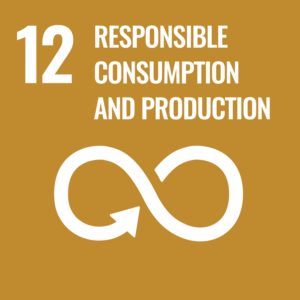
- In 2021, they invested in research and development projects aimed at creating less waste in the processing of materials, reducing machining time and the associated energy used, more efficiently transforming the material into the shapes they need, and maximizing recovery and reprocessing of manufacturing scrap
- Apple continued to expand the use of 100 percent recycled aluminum in the enclosures of a number of products: All iPad models in the lineup now use 100 percent recycled aluminum in their enclosures — joining Apple Watch Series 7, Apple Watch SE, MacBook Air, Mac mini, and the 14-inch and 16-inch MacBook Pro devices. For products released in 2021 that had enclosures made with primary aluminum, it prioritized the use of aluminum smelted using low-carbon sources of electricity rather than fossil fuels — for a lower carbon impact
- The material Apple derives from manufacturing scrap provides high-quality aluminum with fewer associated carbon emissions than newly mined materials. And it is expanding its sourcing to include post-consumer recycled aluminum from building and construction scrap that meets the high standards its products require. These emissions reduction efforts have driven down its aluminum-related emissions to less than 9 percent of the product manufacturing footprint, compared with 27 percent in 2015
- The transition to Apple silicon on Mac devices, for example, continues to drive these improvements — the Mac mini consumes up to 60 percent less energy while in active use than the previous generation. They cut the product energy use across all major product lines by more than 70 percent since 2008 through energy efficiency improvements
- Apple improved energy efficiency at data centers by developing a specification requiring servers to be powered by high-efficiency power supplies — exceeding even the efficiency requirements for ENERGY STAR certification. It deployed these high-performance power supplies to hundreds of thousands of servers in 2021, resulting in over 4 million kilowatt-hours per year in energy savings
- Apple introduced 100 percent recycled plastic in the mesh of the ear cushions of AirPods Max, as well as 100 percent recycled aluminum enclosures on every single model in the iPad lineup
- Apple released eight products with more than 20 percent recycled content. The MacBook Air with M1 chip (2020) had the highest total — made with 44 percent recycled content device-wide, including 100 percent recycled aluminum in the enclosure
- For iPhone 13, they built the first exclusively recycled gold supply chain, which incorporated end-to-end traceability — unprecedented in the industry — allowing us to determine that only materials from recycled sources entered the supply chain
- Since iPhone 12, they’ve been making the Taptic Engines with 100 percent recycled tungsten
- This year Apple released iPhone 13 and iPhone 13 Pro — the first iPhone to be shipped without any plastic packaging components
- For the 24-inch iMac, using corrugated fiber rather than foam for shock absorption allowed them to reduce plastic by 72 percent
- In 2021, Apple and UL co-developed the first ever supply chain zero waste management system assurance program, which allows for third-party zero waste verification at a systems level rather than site level. The new assurance procedure significantly accelerates the verification process and establishes a new model that companies across industries can employ to verify zero waste programs at scale
- Mapping chemicals throughout product development for better and safer products
- In A Protocol for Prioritizing Chemicals of Concern in the Electronics Industry (PDF), Apple shares a framework to help actors across industries systematically evaluate chemistries
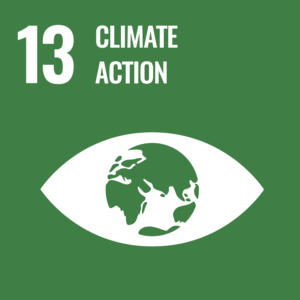
- With the Apple M1 chip, they created a more efficiently designed chip built specifically for Mac devices. For example, switching to the Apple M1 chip for the 13-inch MacBook Pro reduced the energy needed to manufacture and use the device, driving down the product’s carbon footprint by over 8 percent
- In October 2021, Apple became the first public company to join the Sustainable Semiconductor Technologies and Systems research program of Imec with the goal in collaborating is twofold: to improve the data associated with integrated circuit production, from end to end; and to use improved data and shared expertise to identify carbon reduction opportunities for the entire integrated circuits industry
- US$8.5 million of investments have been made in supplier efficiency projects using the Asia Green Fund
- Working with their suppliers to reduce their energy consumption, they avoided more than 1.15 million metric tons of carbon from manufacturing Apple products in fiscal year 2021
- Apple invest capital in new solar PV or wind projects in some markets, matching the renewable energy generated with its energy use
- In fiscal year 2021, Apple avoided 180,000 metric tons of CO2e by shifting the mode of transport and reducing product weight through the removal of the power adapter from iPhone devices
- They retired 167,000 metric tons of carbon credits from the Chyulu Hills project in Kenya to maintain carbon neutrality for the corporate emissions in fiscal year 2021

- Apple partnered with Conservation International and Goldman Sachs to launch the Restore Fund. This innovative fund seeks to blend responsible forestry practices with carbon removal: They’re working with forestry managers to create sustainably managed forests that optimize for both carbon and wood production, creating revenue from timber, and generating high-quality carbon credits
- Protection and restoration of 27,000-acre mangrove forest in Colombia, which is expected to sequester 1 million metric tons of CO2 over the project’s lifetime; the restoration of degraded savannas in the Chyulu Hills region of Kenya
- The REDD+ coastal conservation project in Guatemala protects and conserves forests from deforestation and degradation
- Apple supports the National Park Foundation, which has provided more than 1,000,000 U.S. students access to national parks

- Apple partnered with Conservation International to develop and invest in projects that generate carbon credits to cover its remaining corporate emissions
- At the 26th UN Climate Change Conference of the Parties (COP26) in Glasgow, Scotland, in 2021, Apple called for bold government action on climate change, joining several new initiatives, including the First Movers Coalition, the Forest Investor Club, and the Clean Energy Demand Initiative
- In October 2021, Apple launched a partnership with Atea — the leading provider of IT infrastructure solutions in the Nordic and Baltic region — to collect endof-life iPhone devices for recycling with the Daisy robot located in the Netherlands
- They joined the nonprofit ChemSec, and other industry partners in an effort to develop ChemCoach, a step-by-step approach to help companies advance chemical safety within their products and supply chains
Sustainability Certificates, Awards and Listings



